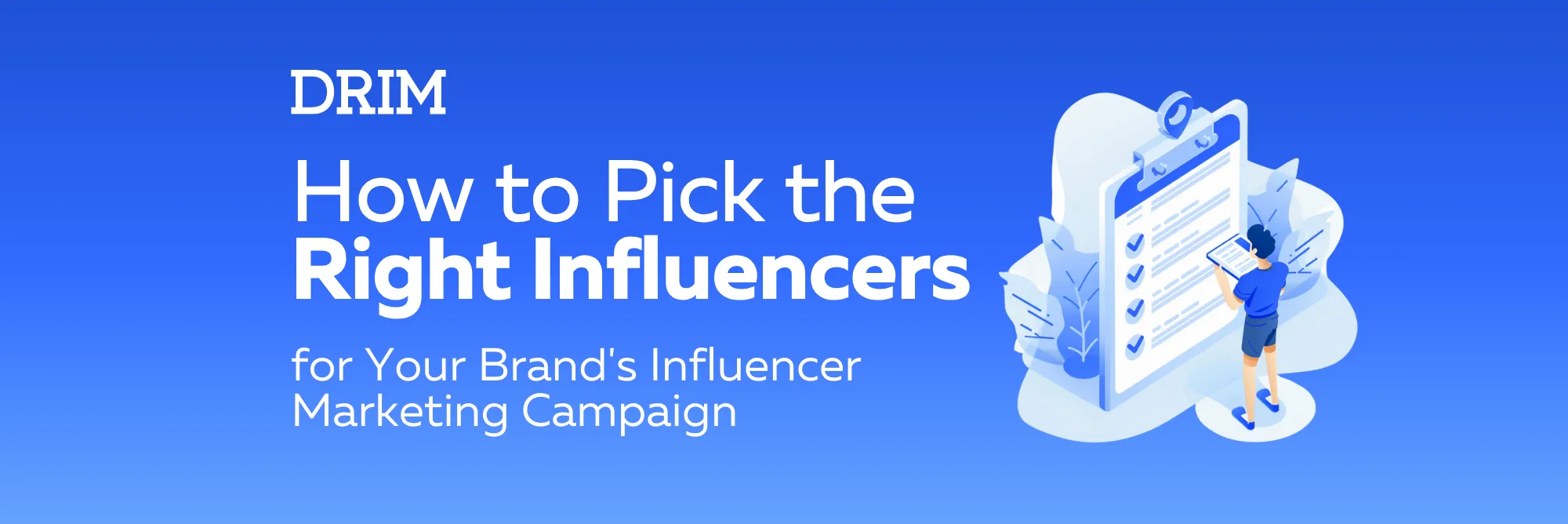
Collaborating with influencers allows brands to leverage their credibility, reach, and engagement to promote products or services effectively. However, with the abundance of influencers across various niches, selecting the right ones for your brand's campaign is not only crucial, but also challenging.
Read on to understand how you can pick the perfect influencers for your brand's campaign.
1. Define Your Goals and Audience
Define your campaign objectives and identify your target audience. What do you aim to achieve – is it increased brand awareness, improving sales, driving website traffic, or maybe you are looking to enhance brand credibility?
Refine your understanding of your target audience's demographics, interests, and behaviours to be able to select influencers who resonate with your brand's values and appeal to your target market.
2. Conduct Thorough Research
Once you have defined your goals and target audience, you can begin the mammoth task of conducting comprehensive research to identify potential influencers. Utilise social media platforms and influencer marketing tools to discover influencers within your niche. Pay attention to factors such as follower demographics, engagement rates, content quality, and brand alignment.
3. Evaluate Influencer Authenticity
Authenticity is paramount in influencer marketing. Dig deep to evaluate influencers' authenticity by analysing their content, engagement with followers, overall reputation and scrutinise their followers list to know if it's full of fake accounts and bots.
You want to find influencers who create genuine, relatable content and have a loyal and engaged following. Avoid influencers who frequently promote irrelevant products, have polarising opinions about politics and/or religion, and demonstrate inauthentic behaviour. Associating with such influencers could damage your brand's reputation.
4. Assess Engagement Metrics
Follower count is essential, but remember that it is a vanity metric that does not in any way guarantee conversion or the results you hope to achieve. Assess engagement metrics such as likes, comments, shares, and saves. High engagement indicates that an influencer's audience is actively interacting with their content, increasing the likelihood of your brand's message resonating with them.
Go a step further and analyse the quality of engagement by examining the authenticity of comments and the influencer's responsiveness to their audience.
5. Consider Relevance and Alignment
Ensure that the influencers you choose are relevant to your brand and campaign objectives. Consider factors such as the influencer's niche, content style, and values to determine if they align with your brand's identity. Collaborating with influencers whose audience shares similar interests and preferences as your target audience enhances the effectiveness of your campaign and fosters authentic connections.
That being said, from a performance marketing perspective, we have found that it is possible for influencers of various segments to be effective in any project. For example, in one of our food tech projects, we found that not only food related bloggers but also influencers from the travel segment did well. It all depends upon meticulous analysis of data using our analytical dashboard. It is important to be flexible to test which influencer segments are proving to be effective, and optimise accordingly.
6. Negotiate Collaborations Wisely
When reaching out to influencers, negotiate collaborations wisely to ensure mutually beneficial partnerships. Clearly outline your campaign objectives, expectations, deliverables, and compensation structure upfront. Be transparent about your brand values and clear about the guidelines. You may offer any creative input you may have, while allowing influencers creative freedom to craft authentic content that resonates with their audience.
7. Track and Analyze Performance
Monitor the performance of your influencer campaigns closely and track key performance indicators (KPIs) such as reach, engagement, website traffic, and conversions. Analytics tools and platform insights help measure the impact of influencer collaborations on your brand's objectives. Analysing campaign performance allows you to refine your approach, optimise future campaigns, and maximise ROI.
Selecting the right influencers for your brand's campaign is a strategic process that requires careful planning, research, and evaluation. By defining your goals, conducting thorough research, assessing authenticity and engagement, considering relevance and alignment, negotiating collaborations wisely, and tracking performance, you can identify influencers who resonate with your target audience and drive tangible results for your brand. Remember, successful influencer partnerships are built on authenticity, trust, and mutual value, ultimately contributing to the success of your marketing efforts.
At DRIM, we meticulously take care of everything that goes into formulating a successful influencer marketing campaign. Write to us at [email protected] to learn more.
Also read: How to Break Brand Fatigue using Influencer Marketing